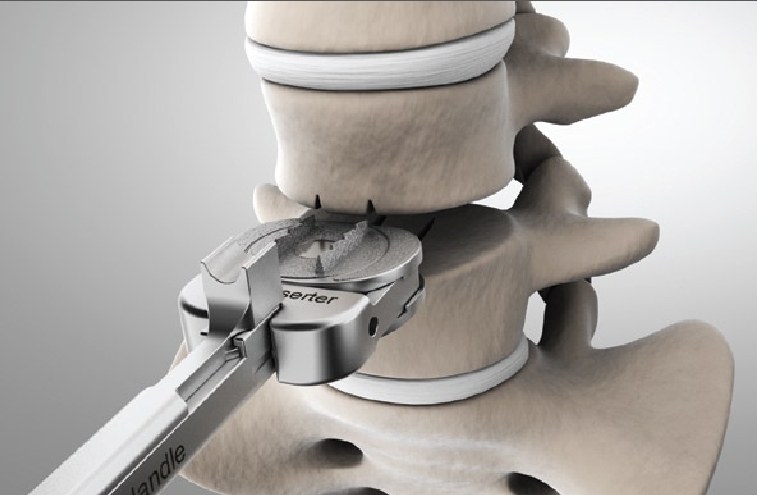Study design:
Controlled laboratory study.
Objective:
To compare motions at the upper instrumented vertebra (UIV) and supra-adjacent level (UIV+1) between two fixation techniques in thoracic posterior spinal fusion (PSF) constructs. We hypothesized there would be greater motion at UIV+1 after cyclic loading across all constructs and bilateral pedicle screws (BPS) with posterior ligamentous compromise would demonstrate the greatest UIV+1 range of motion (ROM).
Summary of background data:
Proximal junctional kyphosis (PJK) is a well-recognized complication following long thoraco-lumbar PSF, however its mechanism is poorly understood.
Methods:
Twenty-seven thoracic functional spine units (FSU) were randomly divided into three UIV fixation groups (n=9): (1) BPS, (2) bilateral transverse process hooks (TPH), and (3) BPS with compromise of the posterior elements between UIV and UIV+1 (BPS-C). Specimens were tested on a servohydraulic materials testing system in native state, following instrumentation, and after cyclic loading. FSUs were loaded in flexion-extension (FE), lateral bending (LB), and axial rotation (AR).
Results:
After cyclic testing, the TPH group had a mean 29.4% increase in FE ROM at UIV+1 versus 76.6% in the BPS group (P<0.05). The BPS-C group showed an increased FE of 49.9% and 62.19% with sectioning of the facet joints and interspinous ligament respectively prior to cyclic testing.
Conclusion:
Bilateral pedicle screws at the UIV led to greater motion at UIV+1 compared to bilateral TPH after cyclic loading. This is likely due to the increased rigidity of BPS compared to TPH leading to a “softer” transition between the TPH construct and native anatomy at the supra-adjacent level. Facet capsule compromise led to a 49.9% increase in UIV+1 motion, underscoring the importance of preserving the posterior ligamentous complex. Clinical studies that account for fusion rates are warranted to determine if constructs with a “soft transition” result in less PJK in vivo.

